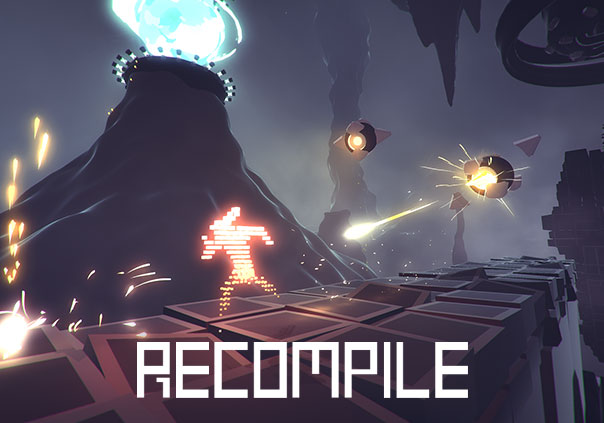

Every screen is tasteful and oozes purpose.

This all serves to accentuate the intentionally sensory nature of Recompile. This might initially feel like a barrier to entry to some - it can admittedly be a little confusing at the beginning - but once you get the hang of it, this too begins to feel paradoxically organic to what is supposed to be an inherently artificial experience by design. That's not to mention the puzzles, which revolve around rewiring circuits using logic gates. Like all good platformers, the level design is constructed to accommodate its mobility options, as opposed to demanding exact combinations in highly specific, self-contained instances.

There were several occasions where I was in legitimate shock that the game had allowed me to progress in unconventional ways that I am 100 percent certain were not the intended route forward. As your mobility becomes increasingly freeform, however, this previously intimidating computer framework becomes a playground for experimentation.
#Recompile release date full#
It is, admittedly, a little slow burning in this regard: as a Metroidvania, it obviously takes quite some time for you to unlock your full oeuvre of abilities. You jump, dash, bolt, hack, slash, and shoot your way across chasms, bridges, pillars - the movement is so varied and the environments so vast that I feel confident in saying that Recompile is already among the greatest platformers of the last decade. Fortunately, Recompile's platforming is its most prominent asset. As a 3D platformer, it would be easy for Recompile to feel like a decent technological spin on a genre that's been done to death. Most of all, Recompile excels in moment-to-moment play. It has a unique low-poly art style backed by striking visual effects and features a deeply cinematic experience set in a purely digital world that reminds of Tron.But that's just part of the bigger picture. Recompile is a dynamic story with alternate endings depending on your decisions. It has a unique low-poly art style backed by striking visual effects and features a deeply cinematic experience set in a purely digital world that reminds of Tron. Nothing is hardcoded, so you can invert Logic gates, override or disable commands, set off puzzles or obstacles to easily bypass them, or even reprogram the citizens to follow your commands. Once you get hacking abilities, you will find that everything can be hacked. You can also get a glider that will let you go anywhere or unlock unlimited jumps and dashes to escape. When you pick up a gun, the game transforms into a third-person shooter. You will find different weapons and abilities that change the game. It is also populated by strange inhabitants, some who are not happy to see you and others that you can choose to help or not. The Mainframe is its own world with power grids, locked doors, and even huge enemy-spawning machines that are all powered by intricate, interconnected logic-gate circuitry. They exist in a state of flux as if trapped by their programming in a kind of twisted digital purgatory.

#Recompile release date code#
The untimely fall of the Seven Suns did lead to millennia of neglect, gradually transforming the Mainframe's vast repository of code into a race of half-sentient, half-deterministic subroutines. This new 3D Metroidvania action game tells the story of a "semi Sentient" rogue piece of code trapped in the Mainframe.


 0 kommentar(er)
0 kommentar(er)
